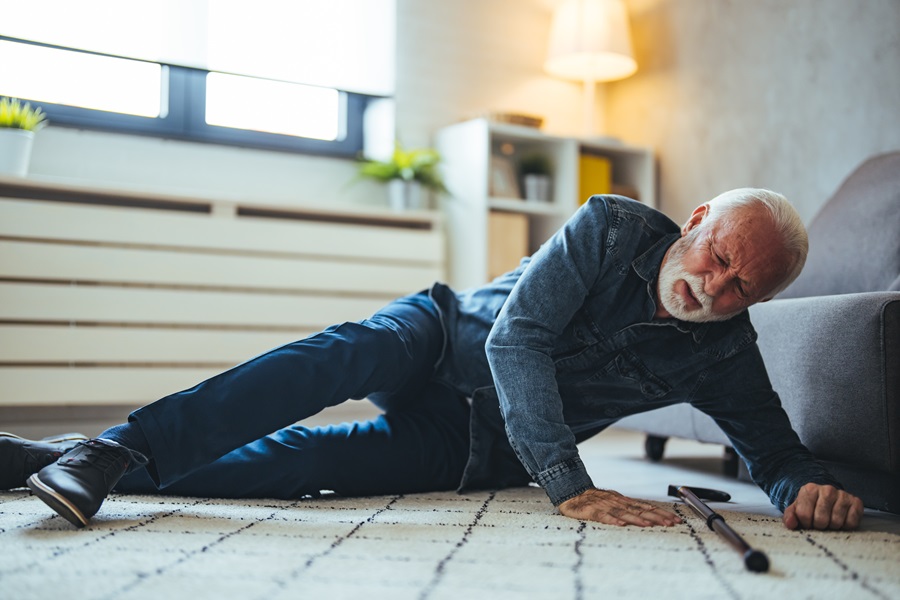As we age, the risks of falling for older adults become increasingly significant. Falls are not only common but can also lead to severe injuries and complications. Understanding these risks and how to prevent falls is crucial for ensuring the safety and well-being of older adults.

Understanding the Causes of Falls
Falls among older adults can be attributed to various factors. These include physical, environmental, and behavioral aspects that increase the likelihood of falling.
Physical Factors
As individuals age, they may experience changes in their physical health, such as decreased muscle strength, impaired balance, and slower reflexes. Chronic health conditions like arthritis or Parkinson’s disease can further exacerbate these issues, leading to a higher risk of falling.
Environmental Factors
Environmental hazards play a significant role in falls among the elderly. Poor lighting, slippery floors, and cluttered pathways can create dangerous situations. It’s essential to modify living spaces to reduce these risks.
Behavioral Factors
Behavioral factors, such as rushing or not using assistive devices, can also contribute to falls. Encouraging the use of canes or walkers and adopting a more cautious approach to daily activities can help mitigate these risks.
Impact of Falls on Older Adults
The impact of falls extends beyond physical injuries. It can lead to a decrease in the quality of life, loss of independence, and a fear of falling again, which can result in reduced physical activity and social isolation.
Preventing Falls in Older Adults
Preventing falls is critical for enhancing the safety and quality of life for older adults. Here are some strategies to consider:
Exercise Regularly
Engaging in regular physical activities, such as walking or tai chi, can improve balance and strength, reducing the risk of falls.
Home Modifications
Making simple adjustments in the home, such as installing grab bars in the bathroom, improving lighting, and removing tripping hazards, can significantly reduce fall risks.
Regular Health Check-ups
Regular visits to healthcare providers for vision and hearing tests, medication reviews, and health assessments can help identify and address potential fall risks.
Technology and Fall Prevention
Technological advancements have introduced various tools and devices designed to prevent falls and ensure quick responses in the event of a fall.
Smartwatches and Alert Systems
Devices like smartwatches equipped with fall detection and emergency alert features are becoming increasingly popular. They provide peace of mind for both older adults and their families. For example, consider the return policy for smartwatches to ensure suitability.
Voice Assistants
Voice-activated devices can also support fall prevention efforts by providing reminders for medications or alerting family members in case of emergencies. Explore options like the voice assistant smartwatches for older adults.
Community Resources and Support
Community resources play a vital role in supporting older adults and reducing fall risks. Many organizations offer exercise classes, home safety assessments, and educational workshops focused on fall prevention.
Local Community Centers
Community centers often provide exercise programs specifically designed for seniors. These programs can enhance physical fitness and social engagement.
Healthcare Provider Initiatives
Healthcare providers may offer fall prevention programs that include comprehensive assessments and personalized recommendations. Check with local clinics for available resources.
Conclusion
Addressing the risks of falling for older adults is essential for maintaining their health and independence. By understanding the causes, implementing preventative measures, and utilizing technology and community resources, we can significantly reduce the occurrence of falls and their impact on older individuals.

FAQs
What are the common causes of falls in older adults?
Common causes include physical health issues, environmental hazards, and behavioral factors such as rushing or not using assistive devices.
How can technology help in preventing falls?
Technology, such as smartwatches with fall detection and voice assistants, can enhance safety by providing quick alerts and reminders.
Are there community resources available for fall prevention?
Yes, many community centers and healthcare providers offer programs and resources focused on fall prevention for older adults. For more detailed information, visit the Physio-pedia website.
This article contains affiliate links. We may earn a commission at no extra cost to you.

